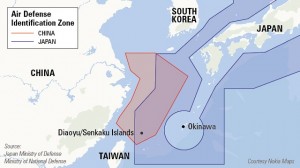For the last few weeks, I have been writing about China and what could be enormous opportunity for clean tech due to the very serious environmental problems facing the country after 30 years of astonishing economic growth.
Direct Investment
 The Chinese News Agency reports that there are 442,00 foreign firms operating in China and it is clear that many large multinationals such as Siemens, Phillips, General Motors, Procter & Gamble, Yum Brands and others have made China one of their key strategic priorities.
The Chinese News Agency reports that there are 442,00 foreign firms operating in China and it is clear that many large multinationals such as Siemens, Phillips, General Motors, Procter & Gamble, Yum Brands and others have made China one of their key strategic priorities.
According to World Bank data, Foreign Direct Investment into China is the largest in the world and has averaged 259 Billion dollars between 2010 and 2012.
Naval Maneuvers
 While business continues to invest in China, China announced last week that it now requires all aircraft entering what is calls the Air Defense Identification Zone (ADIZ) to tell the Chinese authorities that they are flying through the air space.
While business continues to invest in China, China announced last week that it now requires all aircraft entering what is calls the Air Defense Identification Zone (ADIZ) to tell the Chinese authorities that they are flying through the air space.
According to the Times, Japan, Korea and the United States are actively ignoring the ADIZ and sending military ships and planes through it in defiance of the announcement and the Chinese have responded by patrolling the area with her own fighter jets.
 With the first of two Chinese Aircraft Carriers, the Liaoning, now fully operational, China apparently has the ability to project its military power anywhere in the South China Sea and to back up its claim to the tiny islands called Senkaku or Diaoyu depending on whether one is Japanese or Chinese.
With the first of two Chinese Aircraft Carriers, the Liaoning, now fully operational, China apparently has the ability to project its military power anywhere in the South China Sea and to back up its claim to the tiny islands called Senkaku or Diaoyu depending on whether one is Japanese or Chinese.
At issue is if China really has any interest in provoking war with Japan or is simply playing a real life version of Wei-Chi in which one places a stone in enemy territory as a long term, strategic move.
 In On China, Henry Kissenger claims that China’s invasion of India in 1962 was, in fact, such a move and that Mao reached back 1,300 years for insight into how to bring India back into negotiations on their disputed border.
In On China, Henry Kissenger claims that China’s invasion of India in 1962 was, in fact, such a move and that Mao reached back 1,300 years for insight into how to bring India back into negotiations on their disputed border.
Endless Growth?
Of course war between China and Japan, or in fact anything that upsets the Endless Growth narrative that my colleagues in the Economics Department such as Pedro Videla argue for is not considered constructive these days. The narrative would have us believe that China will continue to grow at 6-8% per year more or less forever and in 10 or 20 years be the world’s largest economy as it was 500 years ago.
The narrative is, I believe, at the heart of many of the investments discussed above and is most likely mistaken.
History Happens
 In his study of the international bond market in the last century, Harvard’s Naill Ferguson points out that in the weeks leading up to World War I, the London Bond Market behaved as if nothing would or could happen. The thought was that despite the headlines, the European powers were to close economically and politically and that war was unthinkable.
In his study of the international bond market in the last century, Harvard’s Naill Ferguson points out that in the weeks leading up to World War I, the London Bond Market behaved as if nothing would or could happen. The thought was that despite the headlines, the European powers were to close economically and politically and that war was unthinkable.
What would happen to the investments made by Western companies should the increasingly cold war between Japan and China grow hot? What else could happen in China over the next 20 years? How many Western companies currently have a plan for profound disruption in China?


One thought on “Risk in China”
Comments are closed.